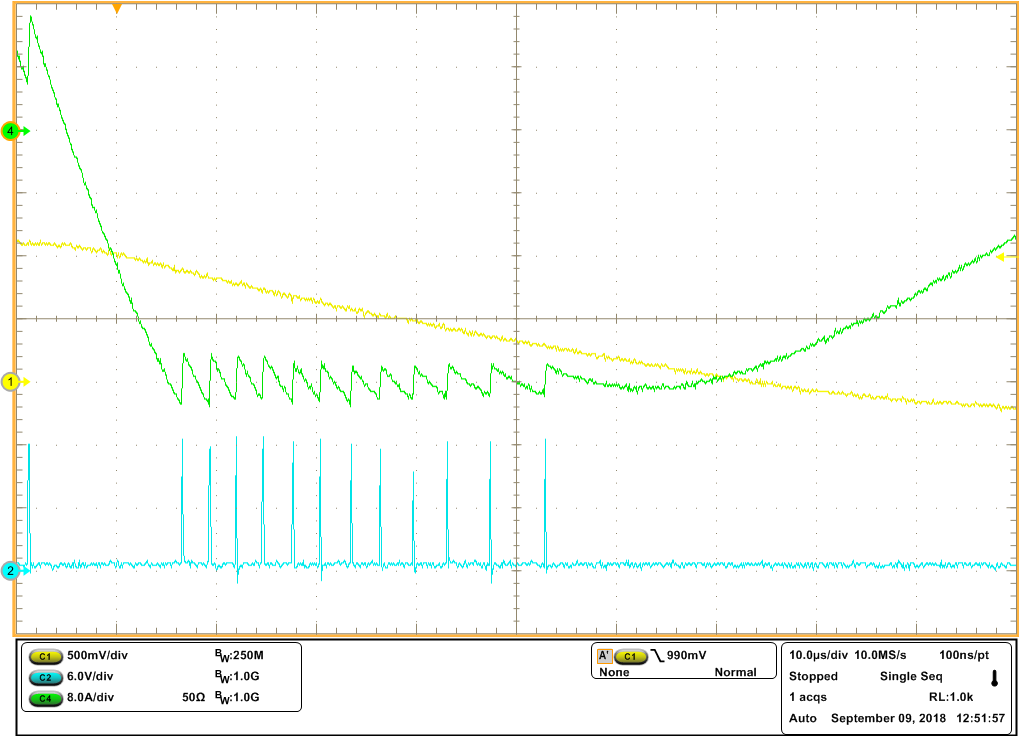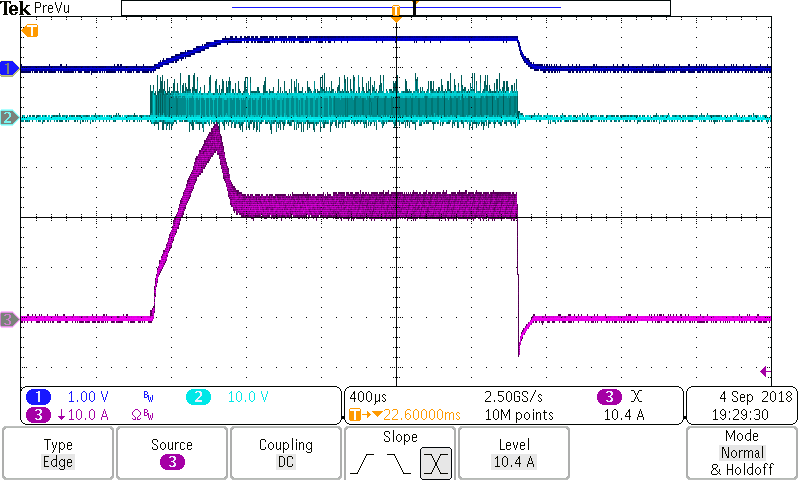Other Parts Discussed in Thread: TPS548D22
Hi Team,
I am curious about a problem: the TPS548D22 OVP circuit only reaches a minimum on-time after reaching the reverse maximum current limit, which makes the TPS548D22 enter the UVP state, which is equivalent to extending the OVP time, which is not conducive to the next startup of the TPS548D22. . What is the purpose of this design?
I'm looking forward to your reply!



